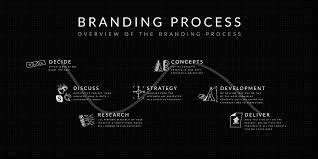The Power of Brand Identity
In today’s competitive business landscape, brand identity plays a crucial role in setting a company apart from its competitors. A strong brand identity is more than just a logo or a catchy slogan – it encompasses the values, personality, and essence of a brand.
Brand identity is what differentiates one company from another in the eyes of consumers. It’s the visual, emotional, and cultural representation of a brand that creates a lasting impression and fosters brand loyalty.
Consistency is key when it comes to building a strong brand identity. From the logo design to the colour palette to the tone of voice used in marketing materials, every element should align cohesively to convey a unified message to customers.
Effective brand identity can also help businesses establish credibility and trust with their target audience. A well-defined brand identity communicates professionalism and reliability, instilling confidence in consumers that they are choosing a reputable company.
Furthermore, brand identity extends beyond just visual elements – it influences how customers perceive and interact with a brand at every touchpoint. From the website design to customer service interactions, every aspect of the brand experience should reflect its core values and personality.
Ultimately, investing in developing a strong brand identity is an investment in long-term success. A distinctive and memorable brand identity can create an emotional connection with customers, drive brand recognition, and ultimately contribute to increased customer loyalty and business growth.
Five Essential Tips for Crafting a Strong Brand Identity
- 1. Define your brand’s values and mission to guide your identity.
- 2. Ensure consistency in visual elements such as logo, colours, and typography.
- 3. Understand your target audience to tailor your brand identity effectively.
- 4. Communicate your brand story and unique selling points clearly.
- 5. Regularly review and adapt your brand identity to stay relevant in the market.
1. Define your brand’s values and mission to guide your identity.
Defining your brand’s values and mission is a fundamental step in shaping a strong brand identity. By clearly outlining what your brand stands for and the purpose it serves, you establish a foundation that guides all aspects of your brand’s identity. These values and mission not only help differentiate your brand in the market but also resonate with your target audience on a deeper level, fostering trust and loyalty. When your brand’s values and mission are authentically reflected in every touchpoint, from visual elements to communication strategies, you create a cohesive and compelling brand identity that leaves a lasting impression on customers.
2. Ensure consistency in visual elements such as logo, colours, and typography.
To establish a strong brand identity, it is crucial to maintain consistency in visual elements like the logo, colour scheme, and typography. These elements serve as the visual foundation of a brand and play a significant role in creating a recognisable and cohesive brand image. By ensuring uniformity in these aspects across all brand touchpoints, businesses can build trust with their audience, reinforce brand recognition, and convey a sense of professionalism and reliability. Consistency in visual elements not only enhances brand recall but also helps to establish a strong and memorable brand presence in the minds of consumers.
3. Understand your target audience to tailor your brand identity effectively.
To tailor your brand identity effectively, it is crucial to understand your target audience. By gaining insights into the preferences, needs, and behaviours of your audience, you can create a brand identity that resonates with them on a deeper level. Understanding your target audience allows you to craft messaging, visual elements, and brand experiences that are specifically tailored to appeal to their interests and values. This targeted approach not only helps in building stronger connections with customers but also increases the likelihood of achieving brand loyalty and long-term success.
4. Communicate your brand story and unique selling points clearly.
To establish a compelling brand identity, it is essential to effectively communicate your brand story and unique selling points to your target audience. By clearly articulating the narrative behind your brand and highlighting what sets you apart from competitors, you can engage customers on a deeper level and foster a stronger connection with them. Transparently conveying your values, mission, and key differentiators not only helps build trust and credibility but also enables customers to understand why your brand is the right choice for them. Clarity in communication about your brand story and unique selling points is key to creating a memorable and impactful brand identity that resonates with consumers.
5. Regularly review and adapt your brand identity to stay relevant in the market.
Regularly reviewing and adapting your brand identity is essential to staying relevant in the ever-evolving market landscape. Consumer preferences, industry trends, and competitive dynamics are constantly changing, making it crucial for brands to reassess their identity periodically. By staying attuned to market shifts and customer feedback, you can make informed adjustments to your brand identity to ensure it remains aligned with your target audience’s needs and expectations. Embracing change and evolution in your brand identity strategy will not only help you stay competitive but also demonstrate your brand’s agility and responsiveness in meeting the demands of a dynamic marketplace.

Leave a Reply